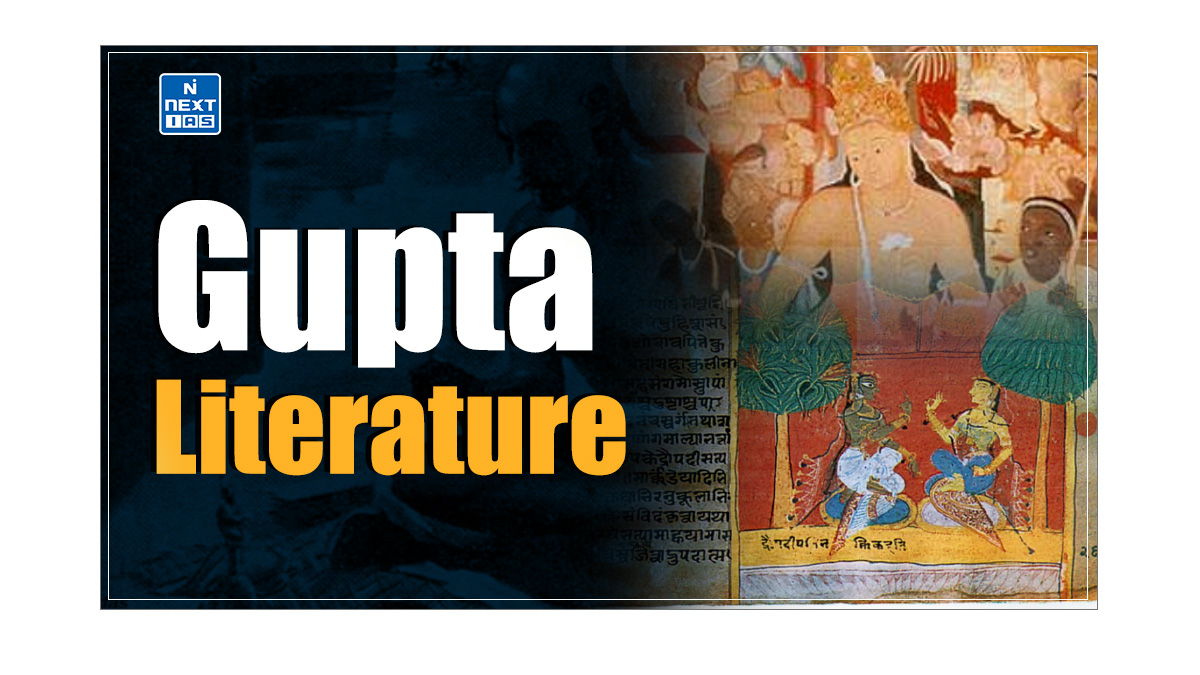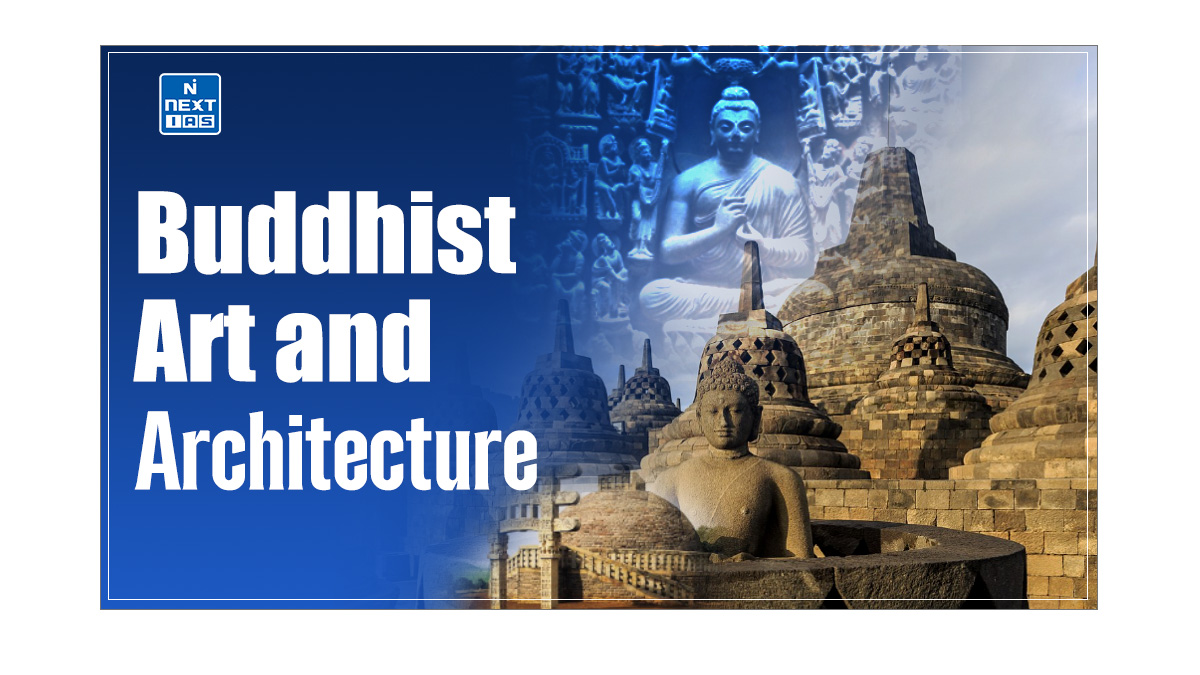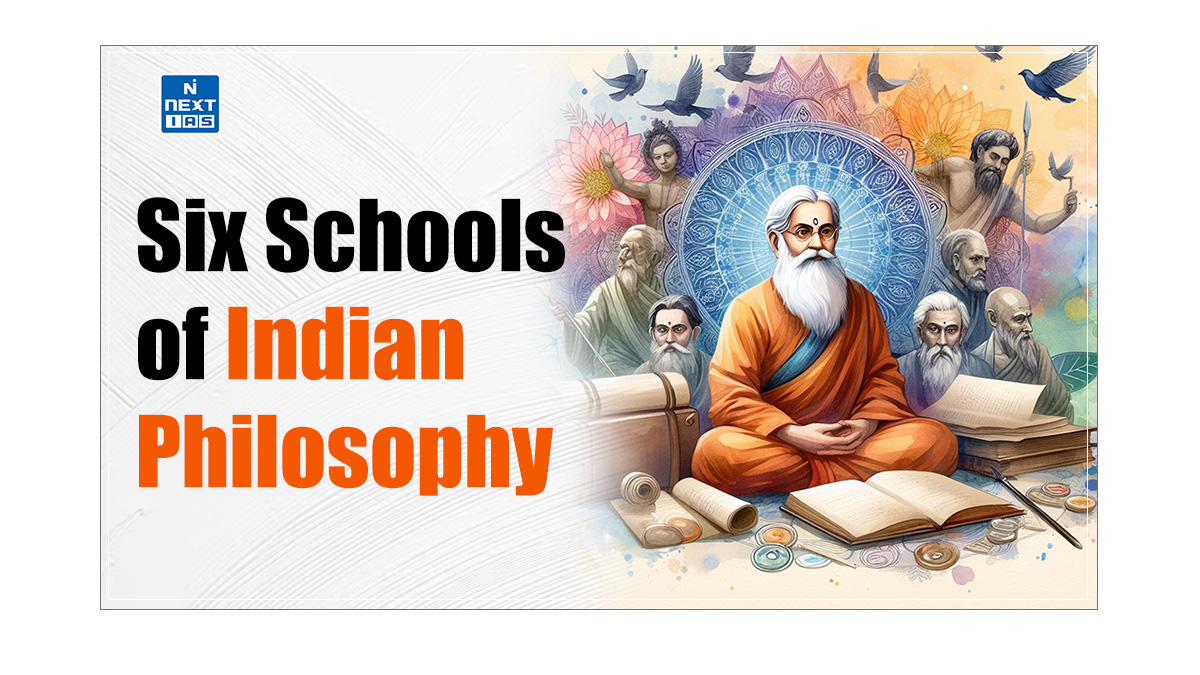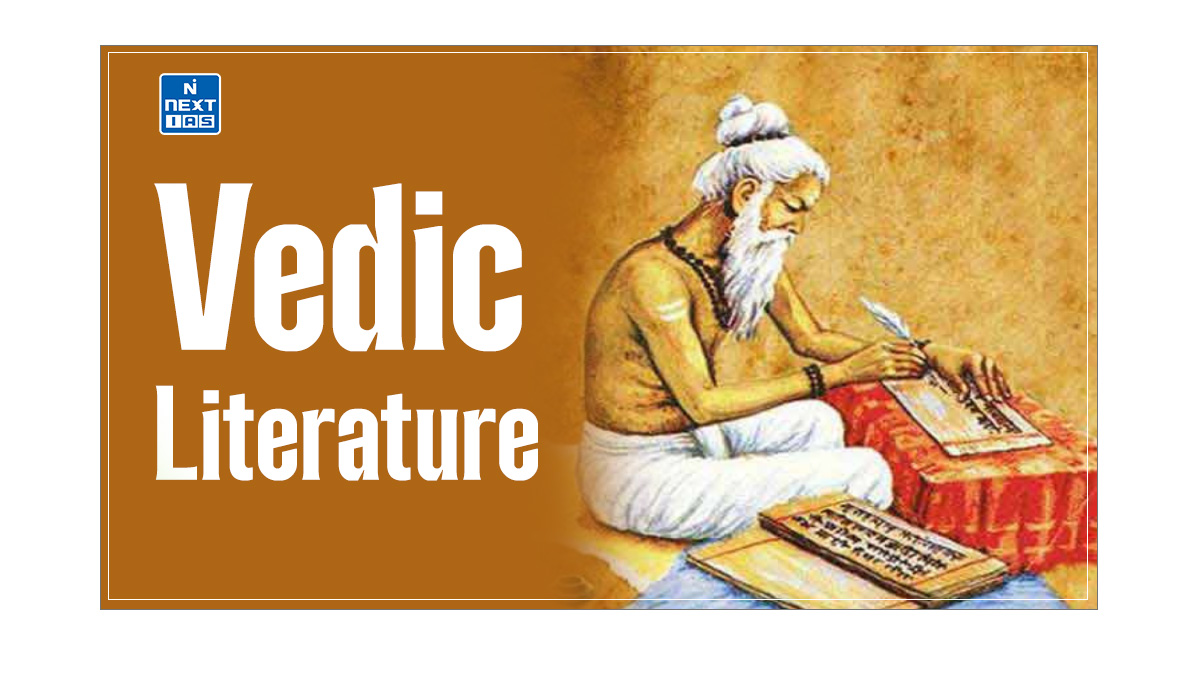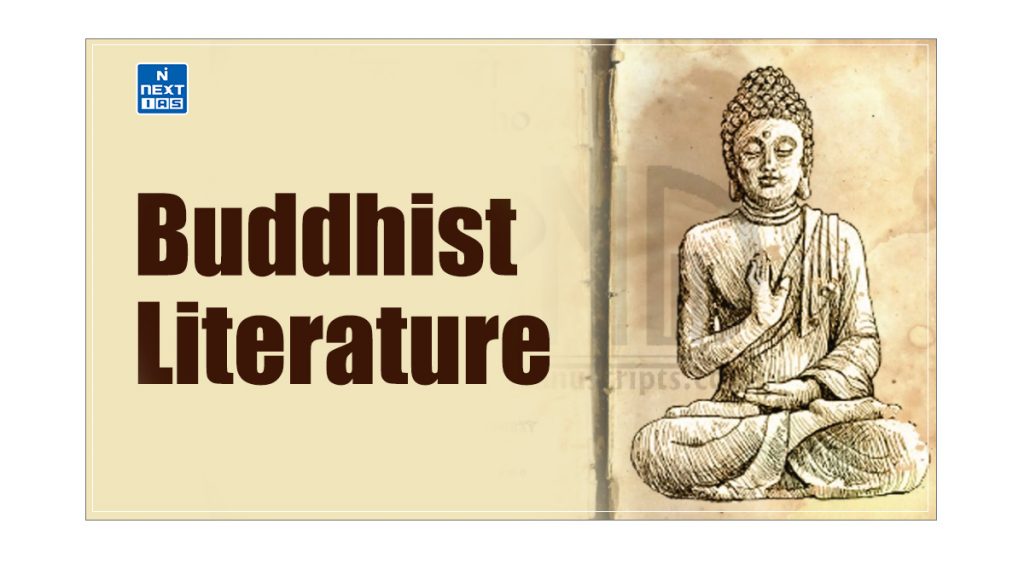
Buddhist Literature encompasses a diverse range of texts, scriptures, commentaries, and poetic works that preserve and interpret the teachings of the Buddha. It plays a crucial role in shaping Asia’s cultural, philosophical, and intellectual traditions and contributes to a rich global heritage. This article aims to study in detail the origins, features, key periods, and significant texts of Buddhist literature and their impact on various cultural and intellectual traditions.
About Buddhism
- Buddhism, one of the world’s major religions, was founded in India in the 6th century BCE by Siddhartha Gautama, known as the Buddha.
- Rooted in the teachings of the Buddha, Buddhism centres on the path to enlightenment through understanding the Four Noble Truths and following the Eightfold Path, which guides ethical conduct, mental discipline, and wisdom.
- A fundamental tenet of Buddhism is the belief in the impermanence of all things and the cessation of suffering through the renunciation of desire and attachment.
- Buddhism’s focus on compassion, meditation, and the pursuit of wisdom has profoundly shaped Asia’s spiritual and cultural landscape.
- Its teachings inspire millions worldwide, offering a path to inner peace and liberation from the cycle of birth and rebirth.
Read our detailed article on Buddhism and Buddhist Art and Architecture.
Buddhism and Literature
- As Buddhism spread across Asia, it inspired a vast body of literature, which not only preserved the teachings of the Buddha but also shaped the cultural and intellectual landscapes of various regions.
- Buddhism and literature, encompassing scriptures, commentaries, and poetic works, have profoundly influenced languages, arts, and philosophies, contributing to rich literary traditions in India, Tibet, China, Japan, and Southeast Asia.
- The Buddhist literary tradition has been instrumental in transmitting complex philosophical ideas and practices, fostering dialogue between different cultures, and contributing to the global heritage of spiritual and intellectual thought.
- Buddhism and literature resonate with and inspire contemporary audiences worldwide through diverse forms and adaptations.
Origin of Buddhist Literature
- Buddhist literature originated with the teachings of Siddhartha Gautama, the Buddha, who delivered sermons orally to his disciples.
- Initially preserved through oral tradition, these teachings were later compiled into texts known as the Tripitaka or the Three Baskets, which form the foundation of Buddhist scriptures.
- The earliest Buddhist texts, written in Pali and Sanskrit, primarily focused on the Buddha’s discourses, ethical guidelines, and monastic rules.
- As Buddhism spread across Asia, Buddhist literature evolved, giving rise to new schools of thought and corresponding literary traditions.
Features of Buddhist Literature
The key features of Buddhist Literature can be seen as follows:
- Focus on Ethical Conduct: Buddhist literature emphasises the moral and ethical path of right action, speech, and thought as part of the Eightfold Path to attain enlightenment.
- Promotion of Non-Violence and Compassion: Central to Buddhist texts is the message of Ahimsa (non-violence) and compassion towards all beings, encouraging peaceful coexistence.
- Philosophical and Analytical Approach: Many Buddhist texts, such as the Abhidhamma Pitaka, take a deep philosophical and psychological approach to understanding reality and the nature of the mind.
- Inclusion of Parables and Stories: Buddhist literature texts like the Jataka Tales use parables and stories of Buddha’s past lives to convey moral lessons, making complex teachings accessible.
- Emphasis on Meditation and Mindfulness: Buddhist literature teaches the importance of meditation practices like Vipassana and Samatha to cultivate awareness and insight.
- Universal Themes of Suffering and Liberation: Central to Buddhist teachings is the concept of Dukkha (suffering) and the path towards liberation through spiritual practice.
- Language and Script: Early Buddhist texts were written in Pali and Sanskrit and later in vernacular languages, making the teachings accessible across different regions and cultures.
Key Periods in the Development of Buddhist Texts
- Buddhist texts are broadly divided into two main categories:
- The Theravada canon, primarily written in Pali and
- The Mahayana canon was composed in Sanskrit and later translated into various languages.
- The Tripitaka (Three Baskets) forms the core of the Theravada texts, encompassing the Vinaya Pitaka (rules for monks), Sutta Pitaka (teachings of the Buddha), and Abhidhamma Pitaka (philosophical analyses).
- In Mahayana Buddhism, important texts include the Prajnaparamita Sutras and the Lotus Sutra, which explore profound philosophical ideas and emphasise the path to enlightenment for all beings.
- These texts continue to influence Buddhist practice and philosophy globally.
Three key periods marked the development of Buddhist literature, which are discussed in detail in the following section.
Early Buddhism (Theravada)
- Pali Canon (Tipitaka): The Pali Canon, the earliest and most authoritative scriptures of Theravada Buddhism, was compiled during the First Buddhist Council around the 5th century BCE.
- It includes the Sutta Pitaka (discourses), Vinaya Pitaka (monastic rules), and Abhidhamma Pitaka (philosophical analyses).
- Early Commentaries: Over time, scholars wrote commentaries (Atthakathas) to explain and elaborate on the canonical texts.
Mahayana Buddhism
- Mahayana Sutras: Emerging around the 1st century CE, Mahayana Buddhism introduced new scriptures, such as the Prajnaparamita Sutras, Lotus Sutra, and Avatamsaka Sutra.
- These expanded on the earlier teachings, focusing on the Bodhisattva path and the concept of emptiness (Shunyata).
- Philosophical Texts: Key philosophical works, such as Nagarjuna’s Madhyamaka Karika and Shantideva’s Bodhisattvacharyavatara, further developed Mahayana thought.
Vajrayana Buddhism
- Tantric Texts (Tantras): Vajrayana Buddhism, which emerged around the 6th century CE, introduced esoteric practices and rituals.
- Vajrayana literature includes texts like the Guhyasamaja Tantra and the Hevajra Tantra, which emphasise using mantras, mandalas, and visualisation techniques.
- Commentaries and Manuals: Subsequent scholars wrote detailed commentaries and practice manuals to guide practitioners in the complex Vajrayana rituals and meditations.
Major Pali and Sanskrit Texts in Buddhist Literature
Pali Texts in Buddhist Literature
The Pali texts in Buddhist Literature can be seen as follows:
- Tripitaka (Three Baskets): The Tripitaka, also known as the Pali Canon, is the most essential collection of scriptures in Theravada Buddhism. Pitaka means ‘basket,’ referring to the original palm-leaf manuscripts stored in baskets. The Tripitaka is divided into three sections:
- Sutta Pitaka: This book contains the discourses and teachings of the Buddha. It includes dialogues, sermons, and sayings attributed to the Buddha and his close disciples.
- Vinaya Pitaka: The Vinaya Pitaka outlines the monastic code, detailing the Buddhist community’s rules and regulations for monks and nuns (Sangha).
- Abhidhamma Pitaka: The Abhidhamma Pitaka comprises seven books. It presents a systematic and philosophical analysis of the Buddha’s teachings, including works like the Digha Nikaya, Majjhima Nikaya, Samyutta Nikaya, Anguttara Nikaya, and Khuddaka Nikaya.
- Milindapanho (Questions of Milinda): This text records a dialogue between King Milinda, identified with the Indo-Greek ruler Menander, and the Buddhist monk Nagasena.
- The discussion covers vital Buddhist concepts and is an essential text for understanding the spread of Buddhism into the Hellenistic world.
- Dipavamsa and Mahavamsa: These are the great chronicles of Sri Lanka, documenting the history of Buddhism on the island. The Dipavamsa (Chronicle of the Island) is the earlier text.
- At the same time, the Mahavamsa (Great Chronicle) is a more detailed account, covering the arrival of Buddhism in Sri Lanka and the reigns of various Sinhalese kings.
Sanskrit Texts in Buddhist Literature
The Sanskrit texts in Buddhist Literature can be seen as follows:
- Buddha Charita and Saundarananda: These epic poems were composed by Ashvaghosha. They narrate the life of the Buddha (Buddha Charita) and the spiritual journey of the Buddha’s half-brother Nanda (Saundarananda).
- Madhyamika Karika and Prajnaparamita Karika: Authored by Nagarjuna, these are foundational texts in Mahayana Buddhism. The Madhyamika Karika (Verses on the Middle Way) presents the philosophy of emptiness (Shunyata), while the Prajnaparamita Karika explores the perfection of wisdom, a key Mahayana concept.
- Mahavibhasha Shastra: This key text in the Sarvastivada school of Buddhism is traditionally attributed to Vasumitra. It serves as a comprehensive commentary on the Abhidharma teachings.
- Vajra Suchi: Another significant work attributed to Ashvaghosha, the Vajra Suchi critiques the caste system, emphasising the equality of all beings.
Jataka Stories
- The Jataka stories are a significant part of Buddhist literature. They depict Gautama Buddha’s previous lives in both human and animal forms.
- Each Jataka story illustrates a moral or ethical lesson, emphasising virtues like compassion, wisdom, generosity, and self-sacrifice.
- In these tales, the Buddha is often portrayed as embodying these qualities, guiding others toward moral conduct.
- The Jataka stories convey Buddhist teachings in a relatable and engaging way.
- The Jataka stories have been depicted in various forms of art, such as sculptures and paintings, particularly in ancient Buddhist sites like Sanchi and Ajanta, highlighting their cultural and spiritual impact.
Language of Buddhist Literature
- The language of Buddhist literature initially was written in Pali and Sanskrit, with early canonical texts like the Tripitaka written in Pali.
- Sanskrit was used for many later Mahayana texts. As Buddhism spread across Asia, Buddhist literature was translated into various regional languages, including Tibetan, Chinese, and Japanese, allowing the teachings to reach diverse cultures.
- These translations of Buddhist literature helped preserve and transmit the Buddhist doctrines, making them accessible to different linguistic and cultural groups worldwide.
Contribution of Buddhism
- Buddhism made a positive contribution to Indian culture. It gave the Indian people a simple, economical and popular religion.
- It rejected rituals and sacrificed the authority of the Brahmanas, which had made Hinduism unpopular.
- Another contribution of Buddhism to India was the monastic system or the organisation of religious devotees in disciplined communities or orders.
- It also provided religious unity to Indian people by raising public morality by its adherence to a high moral code.
- The philosophers of Buddhism took a rational and individualistic approach to religion.
- They preached that self-emancipation could alone help an individual attain Nirvana.
- As far as Indian education and literature are concerned, ancient Buddhist residential places, such as Taxila, Nalanda, and Vikramashila, became learning centres.
Role of Buddhist Literature in World Peace
- Buddhist literature has played a pivotal role in promoting world peace by emphasising core values such as compassion, non-violence, and understanding.
- Buddhist literature texts like the Dhammapada, Tripitaka, and various sutras highlight the importance of mindfulness, ethical conduct, and the cessation of suffering, all of which contribute to harmonious living.
- Buddhist literature fosters a mindset geared towards peaceful coexistence through teachings on interdependence and the rejection of aggression.
- These writings encourage inner peace and moral responsibility, influencing individual behaviour and broader social practices and contributing to global peace efforts.
Conclusion
In conclusion, Buddhist literature has profoundly shaped Indian literary traditions, offering a wealth of texts that include scriptures, moral fables, and philosophical treatises. Its influence extends beyond religious boundaries, contributing to the richness of Indian narrative and thought and continuing to inspire literature and philosophy worldwide.
Frequently Asked Questions (FAQs)
What do you know by Buddhist literature?
Buddhist literature encompasses a diverse range of texts that convey Buddhism’s teachings, stories, and practices.
What are the 4 Buddhist literature?
The four primary types of Buddhist literature are:
– Sutras (Suttas)
– Vinaya
– Abhidhamma (Abhidharma)
– Jataka Tales
What is the contribution of Buddhism to Indian literature?
Buddhism significantly enriched Indian literature by introducing many religious and philosophical texts, including the Sutras, Vinaya, and Abhidhamma. The Buddhist literature fostered the creation of Jataka tales and moral fables about the Buddha’s past lives.

